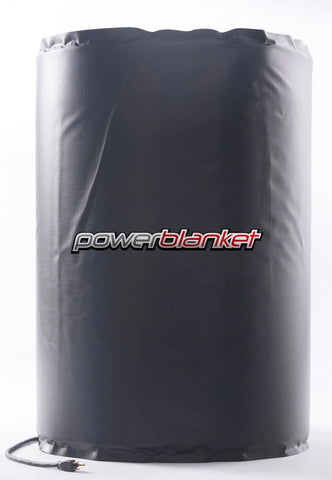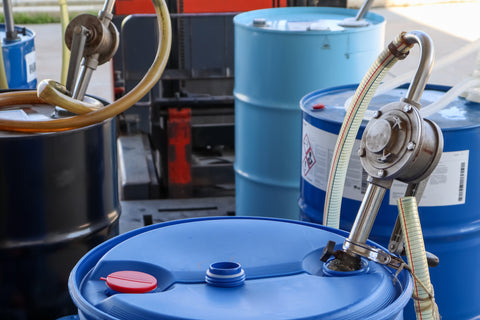Navigating the Challenges of Large-Scale Epoxy Handling
Epoxy coating and resin, particularly in large quantities like 55-gallon epoxy resin drums, are crucial in various industrial applications. Their handling, however, poses unique challenges regarding weight and safety. This article provides essential insights into the safe transport and storage of these substantial resin quantities, ensuring both product integrity and safety compliance.
Understanding Drums of Epoxy Resin
Epoxy coating, a commonly used material, owes its robust properties to the chemical reaction between resin and hardener. When dealing with a substantial quantity, such as a 55-gallon drum, understanding the properties of the epoxy, including its viscosity and mix ratio, becomes vital. This large volume caters to extensive surface applications, often in industrial settings.

Safety Measures for Handling Epoxy Resins
The handling of epoxy coatings or resins, especially in large drums, requires strict adherence to safety protocols. The ratio to mix resin and hardener must be precise to ensure proper curing and avoid any hazardous reactions. Moreover, the low viscosity of the liquid makes it prone to spillage, raising concerns about contamination and material waste. It's essential to store these drums in a dry, moisture-free environment to maintain the resin's quality.
Practical Tips for Shipping and Storing Epoxy
Transporting and storing a 55-gallon drum of epoxy requires meticulous planning. The weight of the drum necessitates proper handling equipment during shipping. To prevent any damage or contamination, the drums should be stored in a controlled environment. This measure helps in maintaining the epoxy's efficacy over time and reduces the risk of moisture or temperature affecting the product. If epoxy is exposed to extreme temperatures the quality of the product is affected. Utilizing products that control the temperature of the drum of resin is crucial in climates that have colder weather.
The Role of Hardener in Epoxy Coating
In epoxy formulations, the hardener plays a critical role in ensuring that the epoxy is cured properly. It determines the curing time and the final characteristics of the epoxy coating. The right mix of epoxy and hardener is crucial for achieving the desired strength and durability. In large-scale applications, such as those using a 55-gallon drum, ensuring a consistent mix ratio throughout the entire quantity is vital for uniform quality.
Managing the Challenges of Low Viscosity Epoxy
One of the significant challenges when working with low-viscosity epoxies, especially in large volumes like those found in 55-gallon drums, is their tendency to flow and spread easily. This characteristic, while beneficial for covering large surfaces evenly, also increases the risk of spillage and unintended spreading, potentially leading to material wastage and contamination issues. The curing process of low-viscosity epoxy is equally critical. It involves a chemical reaction between the epoxy and the hardener, which must occur under controlled conditions to achieve the desired strength and durability. If the ambient temperature is too low or the mix ratio is incorrect, the epoxy may not cure properly, resulting in a compromised coating that fails to provide adequate protection or adhesion. Additionally, the drying time can be affected by the epoxy’s viscosity; lower viscosity often leads to faster spreading but can require more precision in controlling the drying environment to ensure a flawless, uniform finish. Handling low-viscosity epoxy thus demands a careful balance between maintaining fluidity for application ease and controlling environmental factors to ensure optimal curing and drying.
Selecting the Right Epoxy for Your Needs
Choosing the right epoxy involves considering several factors, including the intended application, the size of the area to be covered, and the price. Professionals often prefer specific types of epoxies designed for certain applications, while beginners might look for products with more straightforward instructions. In either case, understanding the product's specifications and storage requirements is key to making an informed decision.

Epoxy Questions Answered
Many questions come along with epoxy coating and curing, as many variables are depending on the project at hand.
How much does a 55-gallon drum of epoxy weigh?
The weight of a 55-gallon drum of epoxy resin depends on the density of the specific epoxy resin formula. Generally, epoxy resins have a density around 1.1 to 1.2 grams per cubic centimeter (g/cm³). To estimate the weight, you can multiply the volume (55 gallons, which is approximately 208.2 liters) by the density and then convert the result to pounds or kilograms.
What is a cheaper alternative to epoxy resin?
A common, cheaper alternative to epoxy resin is polyester resin. Polyester resin is widely used in various applications, including fiberglass manufacturing, casting, and crafting. It tends to be less expensive than epoxy resin but also generally offers lower strength, less durability, and poorer adhesion qualities. Additionally, polyester resin can be more prone to yellowing over time and might emit a stronger odor during application. Other alternatives might include polyurethane resins or acrylic resins, depending on the project's specific requirements.
Why is epoxy resin so expensive?
Epoxy resin is often more expensive than other types of resins due to several factors:
-
Manufacturing Process: The production of epoxy resin is more complex and requires precise chemical processes, contributing to its higher cost.
-
Performance Attributes: Epoxy resin offers superior qualities in terms of strength, durability, chemical resistance, and adhesion, making it a high-performance material for a wide range of applications.
-
Versatility: Its ability to bond with various surfaces and its effectiveness in both industrial and artisanal applications add to its value.
-
Longevity: Epoxy resin typically lasts longer than other resins, resisting wear, chemicals, and moisture effectively.
-
Market Demand: The growing popularity of epoxy resin in both industrial and artistic fields drives its price up due to high demand.
Final Thoughts: Ensuring Safety and Efficiency in Epoxy Transport and Storage
The safe transport and storage of drums of resin are imperative for the integrity of the product and the safety of those handling it. By following the recommended guidelines and understanding the properties of epoxy resins, one can ensure efficient and safe usage of this versatile material.







